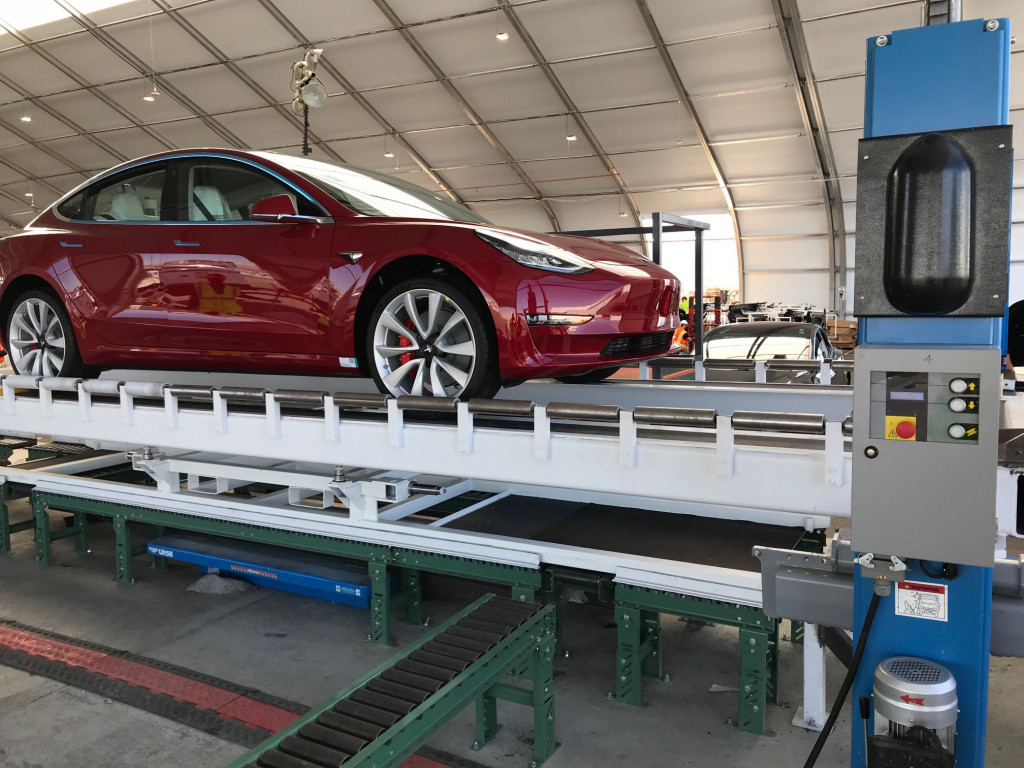Tesla's vehicle purchase incentives web page on Thursday morning reported that the wind-down of incentives for buyers of its cars has begun. The change was first noted and reported by Jalopnik.
Following the change, Tesla buyers will only be eligible to receive the full $7,500 federal tax credit until Dec. 31. After that, the credits will halve, first to $3,750 in the first six months of next year, then to $1,875 in the second half of 2019.
A Tesla spokeswoman confirmed the change to Green Car Reports, but declined to comment further.
DON'T MISS: Tesla nearing limit of $7,500 federal tax credits, which will boost effective prices this fall
The phaseout was triggered when Tesla delivered its 200,000th car to a customer in the U.S. this week.
The change represents a net price increase for Tesla buyers.
The incentives were designed to boost electric car sales by giving buyers a tax credit that would bring prices in line with competitive gas cars.
CHECK OUT: After Tesla's federal tax credits expire, which electric car would you buy?
Each manufacturer is allotted 200,000 credits before the phaseout begins. The reasoning behind the law was that by the time the credits start to phase out, battery costs will be lower and the cars will naturally command less of a premium relative to conventional cars.
Those automakers like Tesla who were early to market would have a head start not only in building electric cars, but also in reducing their battery costs.
With more than 400,000 customers holding deposits on the Tesla Model 3, many of those customers will likely not receive any federal tax credit.

Tesla Model 3 all-wheel drive Performance rolls off a new assembly line in a temporary structure
Many of those same buyers who have not yet received their cars have waited for Tesla to follow through on its promise to build a car for $35,000. So far, the company is only building high-end versions of the Model 3 for significantly higher prices.
For example, a buyer today who purchases a Model 3 for $50,000 (representing a long-range battery, rear-wheel drive car with the required Premium Package), would get a tax credit that will bring the effective price down to $42,500. When the base Model 3 becomes available, many may sell for about that price with Autopilot, all-wheel drive, or the premium package, plus an optional paint color or wheel choice. Without the tax credit, those later buyers may get less car for the same effective price.
READ THIS: Tesla expects 200,000th U.S. sale this year, electric-car tax credits to start phaseout
Earlier this year, analysts debated whether Tesla or GM would be first sell 200,000 cars first and trigger the tax-credit phaseout for their buyers. In the past couple months, Tesla has ramped up production of the Model 3 and it became clearer that Tesla would reach the trigger first.
Sales reports show that the company pulled out all the stops to avoid selling its 200,000th car in the U.S. until after July 1, to maintain the full tax credit for one extra quarter, by pushing more sales to Canada among other things. After that, reaching the target this quarter became inevitable.
GM is still expected to be the next automaker to cross the 200,000 threshold, which could happen later this quarter.












